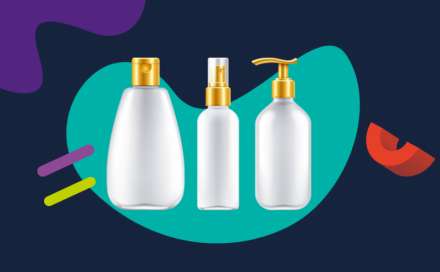Which security features can be used on self-adhesive labels or sleeves to protect products from counterfeiting?
The dynamic development of the dietary supplements segment is unfortunately also linked to the growing share of counterfeits in the industry. The consequences may include financial losses but also the risk of consumer exposure to health problems. Losses can run into millions, and in countries such as India and Pakistan the scale of counterfeiting is huge and accounts for up to 70% of the market.
There is no doubt that one of the key challenges for diet supplement manufacturers is to take action to reduce the counterfeiting of these products. The following guide presents some effective solutions that will help secure the merchandise and allow customers to verify that they are buying the original product from the labels themselves.
For the purposes of this text, let’s break security features into 3 groups used on self-adhesive labels and sleeves:
- visible to the naked eye – they allow the customer to immediately verify the product at the point of purchase and no additional tools are needed,
- partially hidden – they are visible but their purpose is not so easy to decipher, and sometimes getting product information is possible after launching a mobile application or using the manufacturer’s website,
- hidden – in this case, an additional tool is needed to detect a security device, such as a flashlight that emits ultraviolet light, a magnifying glass. In addition to such material artifact, it is equally important to have adequate knowledge to identify the location of the security feature.
The first category of label security features includes individually designed holograms applied by the HS or CS method, or holographic effects created on special transparencies. The use of the above-described solutions on product labels not only allows the product to be protected from counterfeiting but also affects its perception. Holograms and holographic effects are associated with premium brands, a luxury product that distinguishes it from other products on the shop shelf.
Also read: “Should the barcode be legible?”

Another example is the printing of variable data on product labels. This paradoxically simple treatment facilitates immediate identification of the product. It often does not require additional printing costs, quite different from holograms. However, it is important to remember that not every printing house offers this service. It is worth checking at the printers whether it is possible to supply with the printing files batch numbers or codes that will be printed on the labels in the right order and without repetitions so that each label is unique.
Dynamically generated DataMatrix or QR codes are the second group of security features, i.e. those partially hidden. Although these 2D codes are easily recognizable on the packaging, their functionality is a bit more complicated. While finding the code itself on the packaging is not a problem, checking the origin of the product usually requires an internet connection. The corresponding application will then read the code and check the manufacturer’s database for that code and whether it actually is assigned to that product, method, and distribution location. This will confirm (or not) the originality of the goods. In most cases, one can use this functionality with a mobile phone. Because codes are assigned individually and their number can be unlimited, it is often also the case that manufacturers use them not only to secure products but also to create loyalty programs.

Another option to protect self-adhesive labels or sleeve labels may be to use a guilloche background. This method is more common in the case of banknote protection but can also be used on packaging. It consists in applying a properly designed pattern that cannot be scanned. Only holders of the original production file can print the label.

source: http://ministryoftype.co.uk/words/article/guilloches/
Printing of labels with hidden security features
The last category of hidden markings used on labels includes micro-prints. The HP Indigo technology allows applying such small inscriptions that reading them is only possible with a magnifying glass. The font size can be 0.7 points, assuming it is a single-element font printed in one colour which in practice means that the text height can be about 0.3 mm.

The hidden security features group also includes UV ink printing, which is visible only with the use of ultraviolet light. Only using a flashlight emitting this light will allow seeing product differentiating information.




